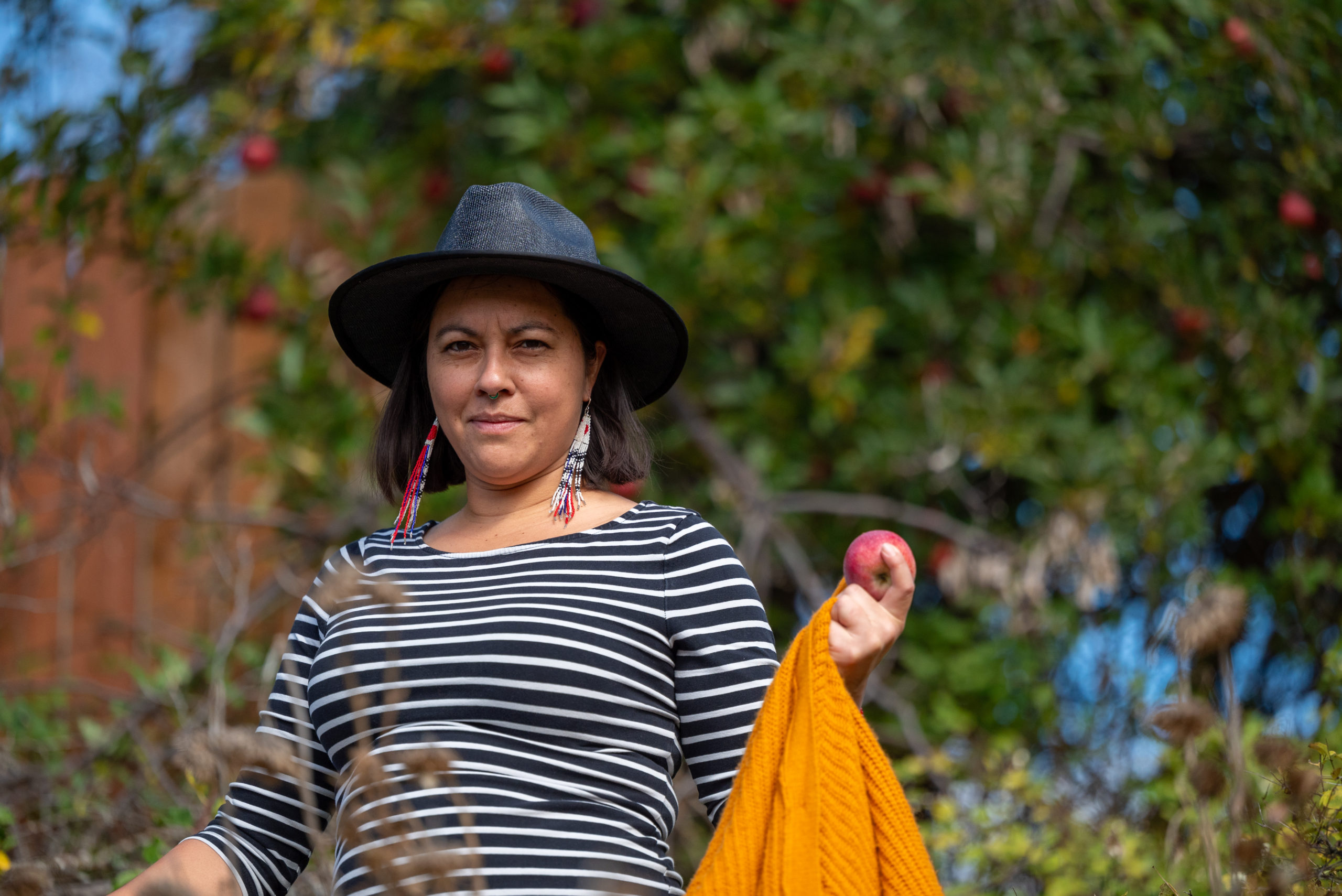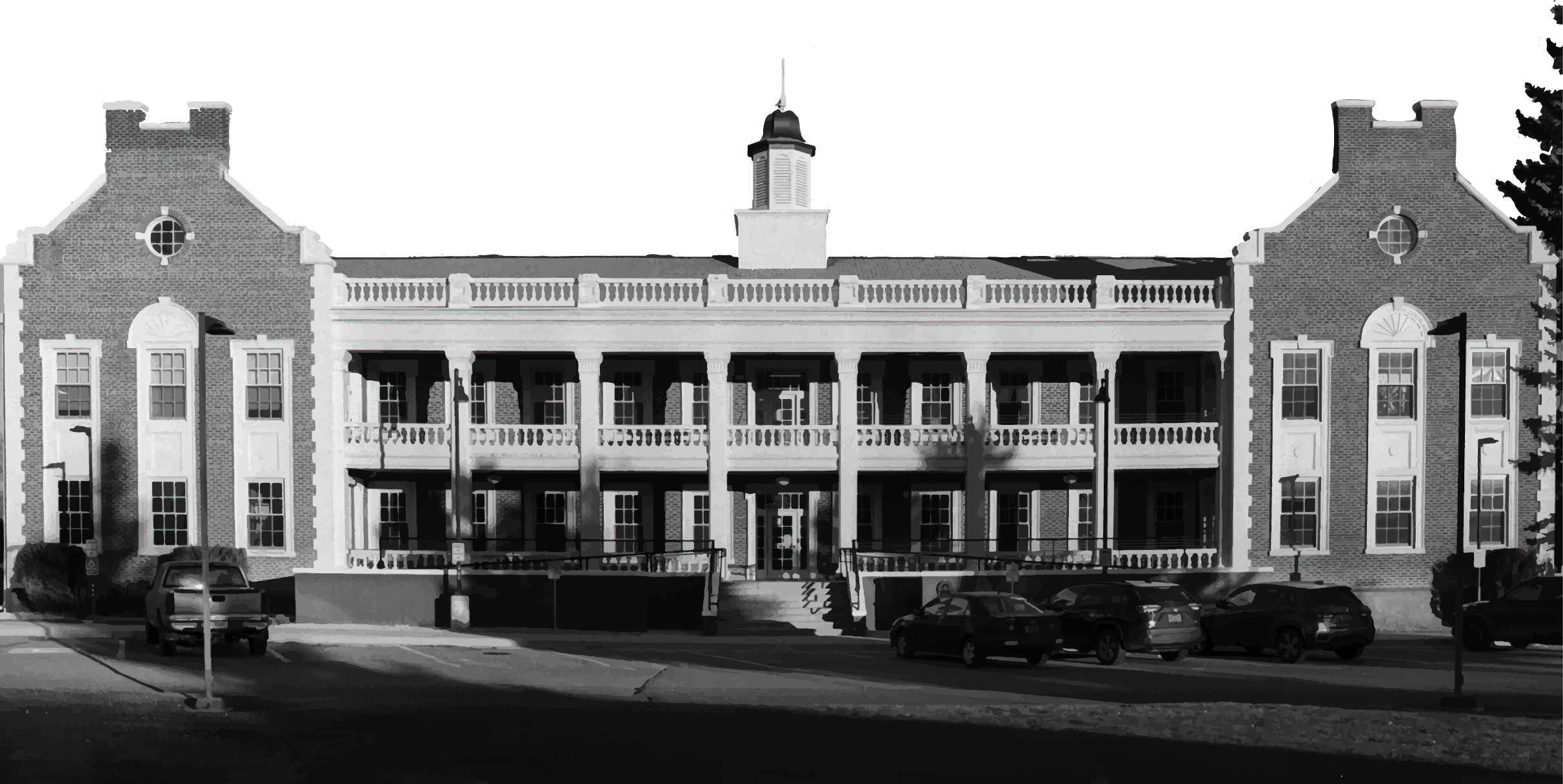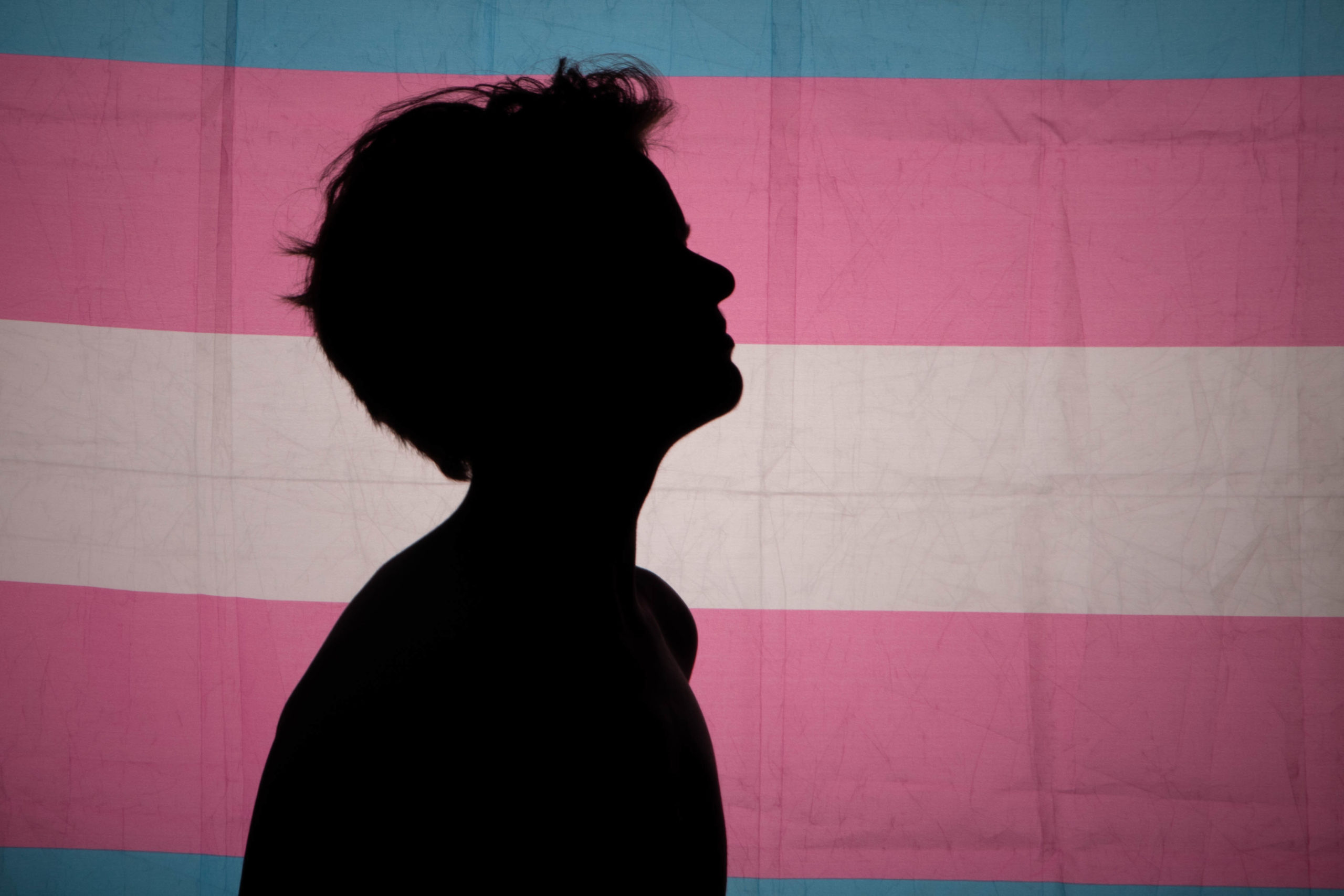The resort town of Whitefish seems perfect, yet its citizens still suffer
By Ella Hall. Photos by Jake LaHaie.

F
orested hills, spotted with yellow bursts of larch trees, surround the town of Whitefish. The mountains just visible in the hazy distance are dusted with the first snow of the year. On a mid-October morning, the normally bustling tourist mecca is quiet–a fall respite between the summer and winter busy seasons.
Despite the seemingly idyllic nature of life in a mountain resort town like Whitefish, these communities often experience higher rates of mental health challenges and suicide than the national average. This phenomenon, referred to as the “paradise paradox,” is due to a complex interplay of factors such as isolation, difficulty accessing mental health care, unique social and financial stressors, high levels of substance use and transient support systems.
Outside Stumptown Snowboards on Central Avenue, a selection of boots and shoes are arranged sidewalk sale style, and a rack of summer clothing flutters in the breeze. Inside, the store is mostly empty. A couple idly browses the colorful Gortex jackets, but the fall air is not yet sharp enough to require layers. An employee sits cross-legged on the floor, sorting goggles and lenses. At the back of the shop, Kaden Kelly works behind the tune-up counter, although today there are no boards in need of work.
Wearing a trucker hat pushed down over brown curls and a black sweatshirt, Kelly is friendly and eager to talk.
“Mental health is a big challenge in our community and people are open to talking about it and trying to shed light on it,” Kelly said. “There’s a lot of folks who have good heads on their shoulders but are affected by mental health struggles.”
Don’t harsh my mellow
According to research by the University of Montana’s Institute for Tourism and Recreation Research, the town saw 1.4 million visitors in 2020. In the 2022-23 winter season, Whitefish Mountain Resort broke its previous visitation record, with more than 500,000 skiers and snowboarders hitting the slopes. For a town of just 8,915 residents, those are big numbers.
Whitefish is a natural hub for outdoor enthusiasts, offering plenty of trail systems and recreational opportunities like biking, skiing and boating. Due to its status as a resort town with a tourism and recreation- based economy, Whitefish is also a hub for seasonal work. Whitefish Mountain Resort public relations manager Chad Sokol said the resort alone employs an additional 600 workers each winter, a significant increase from the roughly 150 employees present year-round.
Lili Tenney works for the Center for Health, Work and Environment within the Colorado School of Public Health. She explained that, according to data from a survey conducted in 2022, death rates in mountain communities have increased over the last ten years involving self-harm, unintended substance use and overdoses.
“The paradise paradox is really debunking the myth that living in these communities is all fun and that we live here to hike and to ski and we have no stressors,” Tenney said. “In one way, these are beautiful places to live, and in another, most of the people who actually live there and work there are struggling to afford to live there and don’t have a whole lot of time as a result to actually enjoy the places they live.”
Whitefish is located in Flathead County, the fourth-most populous county in Montana according to the 2020 census. In 2021, the county’s suicide rate was 39 per 100,000 people, almost three times greater than the national average and higher than the state average of 32 per 100,000 people.
Gaelen Engler has lived in Whitefish for 12 years and currently works as a therapist at Sweetgrass Psychological Services. Many of the clients she works with are seasonal or service workers, people who work in hospitality and the recreation industry.
“There’s two sides of this coin that is living in a mountain town,” Engler said. “On one side, it is really fulfilling and fun-filled, adventurous, kind of living the dream. And then the other side being more the day-to-day reality of what that can entail, which is struggling to make ends meet, maybe not taking the best care of yourself mentally or physically, there not being the most resources because it’s a small town.”
Common themes that come up, both among Engler’s friends and her clients, are the loneliness and isolation of living in a place like Whitefish. “It’s hard to connect with someone if you’re following them on a bike or on a five-minute chairlift ride,” she said.
“What I’ve found about Whitefish, and this is something I’ve given a lot of thought to, is it almost feels like there’s this ‘don’t harsh my mellow’ or ‘don’t kill the vibe’ sentiment,” Engler said.
This mentality, coupled with the stigma and cost associated with getting therapy, means these mental health challenges exist at higher levels in resort communities. Having consistent insurance coverage or connecting with a therapist when you’re only in town for a few months can be difficult as a seasonal worker. Furthermore, according to Engler, therapists in Whitefish are so busy it can be hard to even book an appointment.
“Therapy is really expensive and such a time commitment, a money commitment… there’s just a lot of barriers to getting mental health support here in Whitefish specifically,” Engler said.
Breaking barriers to better mental health care
As the sun breaks from behind the clouds, Leanette Galaz meets fellow community organizers for a walk along the Whitefish Trail. Wearing a wide flat-brimmed hat and a yellow sweater, Galaz has a broad smile, which she flashes frequently as she jokes with her companions.
She moved to Whitefish in September of 2020 and started working with United Today, Stronger Tomorrow, an organizing project focused on the Mountain West region, in 2022. As part of that work, Galaz called Whitefish residents to ask what their priorities for the community were. From those calls, she compiled a list and at a town hall event asked attendees to vote. Housing and mental health were the two items that received the most votes.
Like Engler, Galaz knows the cost of therapy can be a barrier for many in the community. She referenced a friend who is “one of many people who works in the service industry who is struggling to keep her proverbial shit together but can’t afford counseling.”

In addition to the cost of therapy, a loss of funding in 2017 caused many community resources for mental health to shut down. That year, the state of Montana was facing a $200 million dollar budget deficit, and as a result, programs across the state lost funding. The Montana Legislature cut $49 million in state funding dollars from the public health budget, but the actual cut was closer to $100 million due to the loss of matched federal funding.
Galaz said the impacts of the 2017 cuts to mental health programs are still widely felt in Whitefish and the Flathead area. The community lost much needed resources, such as drop-in services for mental health.
Galaz is gathering information to inform the commission charged with distributing the funds allocated by Montana House Bill 872, also known as Future Generations, signed in May by Gov. Greg Gianforte to reform and improve Montana’s behavioral health and developmental disabilities service systems. While Galaz is hopeful about what this $300 million can do, she also noted that it is not enough for sustainability into the future.
Walking along the river path, Galaz spots an apple tree. She scrambles up the bank and starts picking, taking off her sweater and filling it with crisp fall apples. Nino and Victoria Gabaldón smile as they watch Galaz crunch into a pilfered apple. The couple has lived in the area for eight years and works with the National Alliance on Mental Illness.
“You gotta have the uncomfortable conversations,” Nino said, “it’s those real ones that will make the change.”
In part, Galaz attributes the mental health challenges faced by residents of Whitefish to the makeup of the community.
“I think class is a big dividing line in the community right now,” Galaz said. “There’s a lot of resentment amongst the blue-collar workers towards the wealthy newcomers.”
According to Tenney, there are more wealth disparities in the workforce in resort communities like Whitefish. “You’re having people who are comparing their lives and their expectations to second homeowners who are coming in with an exorbitant amount of money and having that effect on your community at large,” she said.
During the COVID-driven housing boom, Whitefish and the broader Flathead region saw some of the greatest increases in housing prices and population growth in Montana. From July 2020 to April 2023, 7,465 new residents moved to Flathead County and in 2021 the average sale price increased by 71% compared to 2019.
“Because there’s been so much shifting, the sense of community is unbalanced,” Galaz said. “For folks, especially in working class positions, to live so close with such wealth is very taxing on their mental health.”
The urban exodus brought about by the pandemic exacerbated existing economic imbalances within these mountain resort towns. While not as extreme as a place like Teton County, Wyoming–which boasts the greatest wealth disparity in the nation, according to the Economic Policy Institute – Whitefish is experiencing a version of this phenomenon.
Tenney pointed to this as an important aspect of the paradise paradox. “One of the most fundamental things that needs to be acknowledged is that the disparities between low income and middle income is becoming wider,” she said.
Galaz put it a little more bluntly, “A real community is not just made up of wealthy people and servants.”
“Bringing the stoke” can bring you down
Megan Qualls moved to Whitefish in 2012. Her dad’s family is from the Flathead Valley, but Qualls moved around a lot growing up. After graduating from high school, she settled in Whitefish.
“I used to be really big in the party scene,” Qualls said, “Really big into that whole dark, downtrodden lifestyle, almost kind of really embracing the dirtbag and I was really depressed.”
Qualls said that on the outside she appeared fine, especially when hitting the slopes, but that feeling of chasing the next high and always bringing the stoke was really bringing her down. For Qualls, this all came to a head during COVID when she and her husband lost multiple friends to suicide.
“We ended up losing like friend after friend after friend and it just kind of got like, way too much,” Qualls said, “And then I just kind of hit a point where I was like, ‘this isn’t working.'”
Qualls started researching mental health and came across the idea of the paradise paradox. She also began working to improve her own mental well-being, much of which came down to finding more purpose and meaning in her life.
“[In Whitefish] there’s this kind of… belief I guess, that we should just be partying and kind of enjoying life all the time,” Qualls said, “And then when it comes to work, and like, purpose and meaning, I feel like that aspect kind of gets missed and so I think there ends up being a lot of dopamine chasing and not a lot of like, purpose chasing.”
As an avid snowboarder, Qualls has visited many resorts across the country and, in her view, the level of partying that happens in Whitefish is high, even compared to other resorts. Whitefish provides free transportation from downtown to the resort and back, and Qualls said this means people can drink heavily up at the mountain, ride the bus back to town and keep partying at the bars.
“I think it’s kind of taboo, because it’s such a big moneymaker account, but I think alcohol is a huge problem here,” she said. “Drinking is really, really heavy here, and I can’t help but make a connection between that and some of the mental health issues we have.”
Creating community
There are a few Whitefish-based organizations that aim to address the mental health challenges created in part by the paradise paradox. Engler is the program manager for Well Montana, a non-profit group formed by citizens to address the lack of mental health services in the Flathead Valley and to destigmatize mental health struggles. The group runs free workshops in various workplaces, from schools to local businesses and even up at Whitefish Mountain Resort.
The Nate Chute Foundation is another local organization focused on suicide prevention and mental wellness, the foundation offers a variety of programs and workshops.
Under a canopy of clouds, Corrie Holloway leaves the Nate Chute Foundation office and crosses the street to Kay Beller Park, situated along the Whitefish River. Holloway spent 20 years working seasonal jobs but now serves as the community outreach coordinator for the Nate Chute Foundation.
The golden leaves of aspens and willows lining the riverbank are reflected in the water as Holloway sits at one of the park’s picnic tables. Like others, she has noticed how shifting community dynamics have led to worsening mental health.
“Our community is getting busy, less people know each other, which might be a reason people are slipping through the cracks,” Holloway said.
As a longtime Whitefish resident and past seasonal worker, now working with the foundation, Holloway knows that mental health affects everybody. In the end, she said it all comes back to support systems and fostering community.
“It’s really about empathy and creating community that looks out for one another,” Holloway said. “Whether or not it’s seasonal, or you live here year-round, I think just looking out for one another.”
Read More:

Previous:
THE MONTANA STATE HOSPITAL
A brief history highlighting the hospital’s important events from 1874 to the present day
Story by Trey Lawrence. Print graphic by Jake LaHaie. Photo by Fox Croasmunchristensen.

Next:
A LIGHT IN THE DARK
A Montana transgender teenagers’ journey for gender affirmation
Story by Nance Beston and Aislin Tweedy. Photos by Nance Beston.



